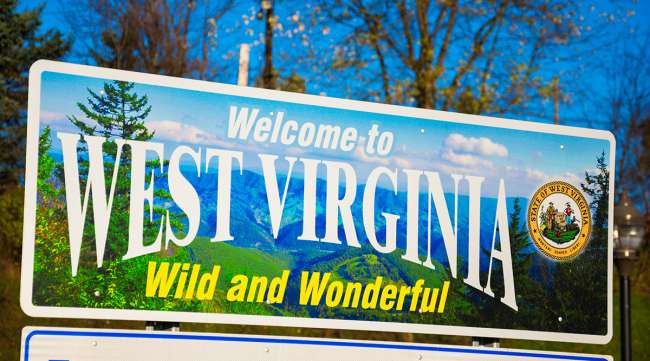West Virginia Transportation Secretary: Benefits of $2.8 Billion Road Plan Already Happening

West Virginia Transportation Secretary Tom Smith told state legislators Jan. 29 that West Virginia drivers are already beginning to notice road improvements as part of Gov. Jim Justice’s four-year, $2.8 billion “Roads to Prosperity” program.
Smith said Highways initiated a secondary roads improvement program fast fall, using funds that won’t have to be committed to paying off road bonds for the next year to 18 months, on a pay-as-you-go basis.
“These are roads we never have a chance to get to, and you really can see a dramatic difference,” Smith said of some 300 projects upgrading 1,000 miles of secondary roads at a cost of $100 million, projects that have either been completed or are ready to go when the weather improves.
This year, the secondary roads program will spend an additional $85 million on 140 projects, he said.
“The pay-as-you-go program is showing citizens it really makes a difference,” Smith said of Justice’s road funding program.
Smith said the division plans to issue bonds in waves in order to get the best interest rates.
Last October, the state sold the first $260 million of $500 million of GARVEE bonds, which are credited against future federal highways funding, at what Smith called a “very favorable” 2.145% interest rate.
He said the first $800 million of $1.6 billion of general obligation bonds, authorized by voters’ approval of a constitutional amendment in October, are expected to go to market in May, while the state Parkways Authority is completing traffic studies in anticipation of a $500 million bond issue later this spring.
The bond funding is on top of about $750 million of state and federal highways funding annually.
“It’s an awesome responsibility we have. We need to do it right,” Smith said of the pending surge of highways construction and maintenance.
Also Jan. 29 during the Department of Transportation budget hearing:
Smith confirmed that the Maryland Department of Transportation is seeking a subsidy from West Virginia to help underwrite the portion of MARC commuter rail that serves the Eastern Panhandle, with negotiations starting at $3.2 million a year.
“We’re hopeful there’s some chance to negotiate that down,” he said.
Smith said the department recognizes the MARC service — with stops in Harpers Ferry, Duffields and Martinsburg — is a very important transportation service to that part of the state, although he said there is no current funding in the Transportation budget that can be directly applied to the subsidy.
He said there could be a combination of legislative appropriations, federal funding, support from local communities, and possible fare increases to cover the MARC subsidy.
“This is a challenge we’re willing to roll up our sleeves and tend to,” Smith said.
Charles Vance, executive director of the Public Port Authority, said the Pritchard Intermodal Facility in Wayne County is handling about 60 to 70 trailers a month, below the 1,100 trailers needed to reach the break-even point for a private operator to run the facility.
Smith said the state is looking to boost use of the facility, which opened in the spring of 2016. “There’s a tremendous opportunity there if it’s utilized correctly,” he said.
Distributed by Tribune Content Agency, LLC




